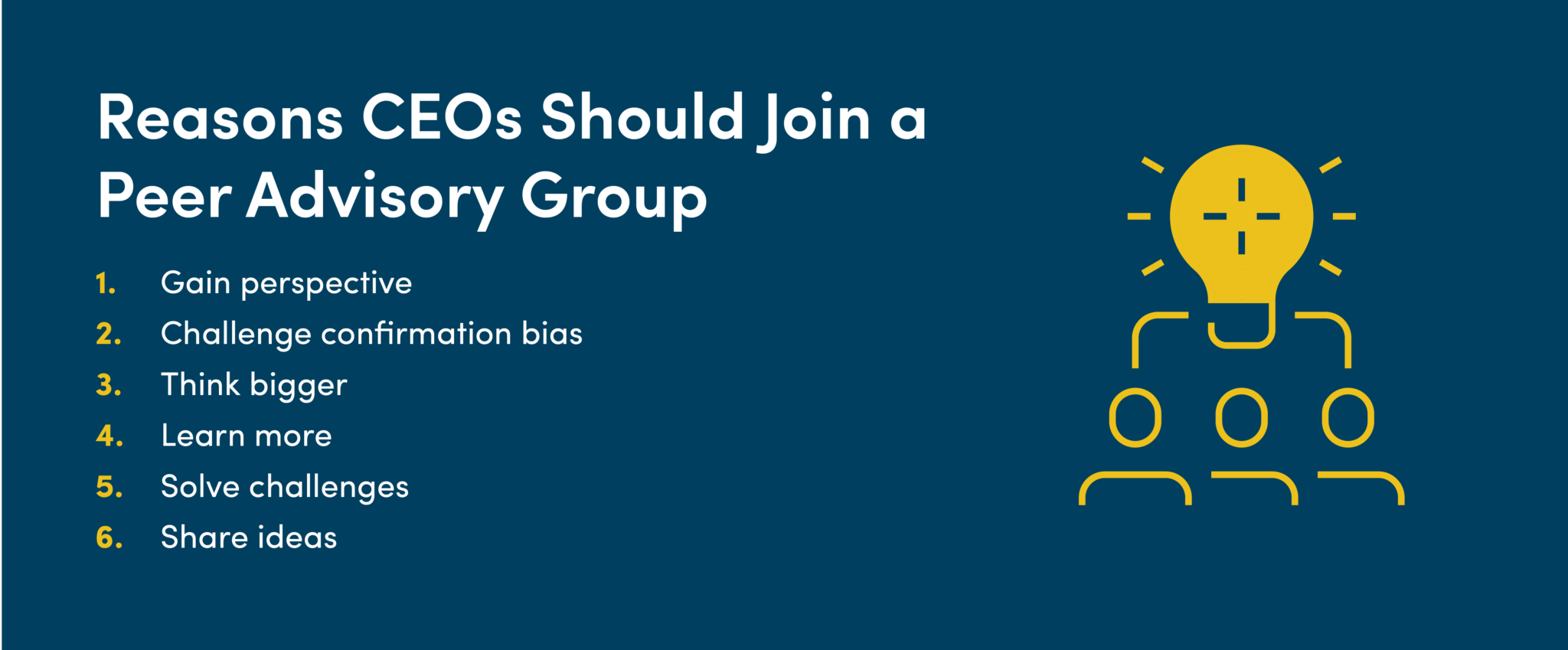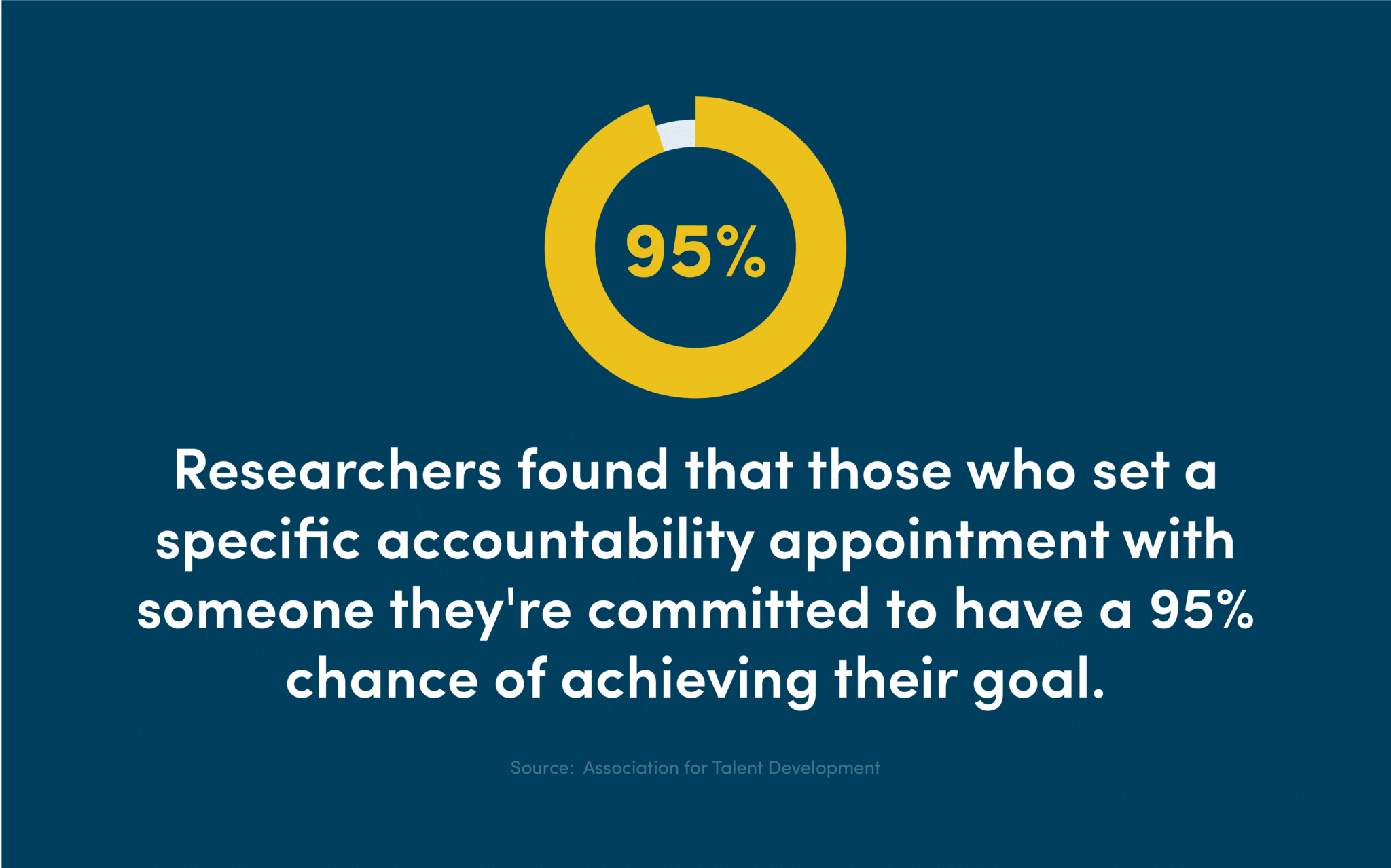You are here: Home / Leadership Insights / Leadership / What is a peer advisory group and its benefits?

What is a peer advisory group and its benefits?

Peer advisory groups are like sounding boards, where business leaders from a range of industries and backgrounds come together to troubleshoot issues, share best practices and receive and offer unbiased feedback with an experienced mentor leading the charge. It’s like having your own pit crew on your leadership journey.
According to a Stanford Graduate School of Business study, many CEOs struggle with isolation, while almost 75% do not receive outside leadership advice. Simply put, it can get lonely at the top. And when left unchecked, executive isolation can be a debilitating malady that oozes throughout the organisation. A CEO peer advisory group can help if you’re looking to scale to a higher level in business and life
What is a peer advisory group?
A peer advisory group or CEO peer advisory group is a highly-focused, specialised network of support comprised of fellow business owners and executives from non-competing organisations.
The CEO peer advisory group represents a unique opportunity for executives to share experiences, offer insights, and give and receive advice. By participating in a peer advisory group, you’ll be optimally positioned to navigate challenges, create solutions, and achieve your goals.
There are many valuable insights executives can gain from joining a peer advisory group. Below are some of the top reasons why considering a peer advisory group can prove beneficial:

1. Gain perspective
World-class leaders seek diverse perspectives on important decisions from trusted peers. They find other CEOs and business leaders who’ve tackled similar issues in different industries. These peers understand the nuances and challenges of the C-suite and bring fresh perspectives unhampered by institutional knowledge. Hearing from CEOs outside their company and industry allows leaders to honestly share any challenges and receive genuine, objective, and unbiased feedback.
2. Challenge confirmation bias
Great leaders are high on curiosity and low on ego. These leaders are the first to admit they don’t have all the answers and also the ones who believe most that a breakthrough is on the horizon. They are inquisitive, welcome new ideas from trusted sources that challenge their thinking, and are eager to explore.
Confirmation bias can occur when leaders have already made up their minds about a situation and then seek out answers that validate their point of view. Peer advisory groups help leaders to actively work to prevent that from happening, as CEOs come together with those who they know will challenge their position.
3. The social aspect of peer advisory groups
Peer advisory groups offer more than just professional growth; they foster a strong sense of community and social connection. Entrepreneurs and executives alike find that these groups open new pathways for social interactions, where trust and camaraderie blossom over time.
Whether through structured meetings or informal gatherings, the connections made in these groups enhance both personal and professional domains. Engaging socially can lead to lifelong friendships, building a dependable network of peers supporting each other’s endeavours.
4. Think bigger
Leading people and teams can too often be focused on the most pressing issue of the moment instead of the big picture. Maybe it’s replacing a key hire, launching a new product, reducing costs, or chasing incremental growth. Taking time away from day-to-day operations allows leaders to step back and focus on key strategic decisions with peers.
5. Learn More
One of the most powerful tools in peer advisory groups is an exponentially expanded knowledge base. Listening to different approaches, perspectives, and experts can encourage leaders to think outside the box. When CEOs make a deliberate effort to learn from those with diverse backgrounds and experiences, they can tap into new ways of thinking — fresh perspectives that challenge the status quo.
6. Solve challenges
Some leaders may discover that they are thinking about a challenge in a way that doesn’t get to the true underlying issue. If you tell a friend you have an issue with delegating assignments, they might give you a new technique to try. However, an experienced coach will listen closely and ask great questions that get to the root of what’s holding you back.
7. Expanding expertise through participation
By joining a peer advisory group, business leaders expose themselves to a diversity of expertise that may not be available within their own industries. Regular meetings with peers from various backgrounds help broaden one’s expertise, especially in areas such as marketing and management strategies.
This setting thrives on shared learning, as members contribute to each other’s growth. The support system offered through board participation ensures leaders continuously refine their skills and stay competitive in their fields.
8. Share ideas
As a Vistage member, you learn as much from listening to others process their issues as you do from seeking input. When you’re listening closely to others, it often unlocks a solution for your business that you might not have considered.
While you can certainly attempt to hike a formidable mountain on your own, it’s good to know you have options. If your goal was to climb Mt. Everest, you’d hire a guide and climb with a team who knows the mountain and supports your journey. World-class leaders understand the same is true in business.
Peer advisory groups equip CEOs and business owners with the tools, resources, and guidance so they can make great decisions. Leaders who surround themselves with executive peers who offer differing points of view — and push them to achieve their next peak of success — create a fundamental condition for leadership growth.
What are the benefits of peer advisory groups?
Unlike any other forum, peer advisory groups can help you achieve your goals and share in the success. However, not all peer advisory groups are created equal. The cornerstones and benefits of an effective peer advisory group are accountability, confidentiality, network building, and results, such as increased profits. Four proven benefits of peer advisory groups are:

1. Accountability
The power of accountability can go far. The American Society of Training and Development (ASTD) conducted a study on accountability and discovered you have a 65% chance of achieving a goal if you commit to and are accountable to someone. However, when you have a specific accountability appointment with someone you’ve committed to, you can bolster your chances of success up to 95%.

The message is simple: if you want to increase the chances of achieving your goals, accountability is the key. Peer advisory groups help create the supportive, accountable environment you need for success. Unlike a spouse or subordinate, your group members have no incentive tied to your success other than the mutual joy of it. The group structure helps facilitate genuine encouragement for you to stay on track while holding you responsible for progressing toward the objective.
2. Confidentiality
Confidentiality is a cornerstone of trust. Many business peer advisory groups employ formal written documents to establish a confidential framework, which can assuage concerns and allow leaders to share honestly and openly without recourse.
- Confidentiality ensures no one in your peer advisory group can utilise information from the group to gain a competitive advantage.
- No one in the peer group can attempt to sell your services or products to fellow members.
3. Networking
A peer advisory group is like a supercharged networking platform for business owners, executives, and like-minded leaders. When you join a group, you’ll automatically walk into a room of people who can help you develop professionally and personally.
4. Increased profits
As a leader, you aren’t judged by the size of your network or the professional growth you’ve experienced. While the intangibles are admirable, your ultimate measure of professional success and effectiveness is quantifiable in dollars and cents — or profits. The right peer advisory group assists in this area as well.
Not every CEO peer advisory group is created equally. For example, Vistage CEO peer advisory group members increased their annual revenue by 4.6% in 2020, while comparable non-members who ran small to mid-sized businesses experienced a revenue decrease of 4.7% in a Dun & Bradstreet study. With historical returns like this, joining a Vistage group is an investment that can deliver exceptional ROI.
How do you choose a peer advisory group?
Unlocking the benefits of peer advisory groups hinges on your ability to choose the right one. A few tips and considerations for selecting a CEO peer advisory group are explained below.
1. Define your goals
Before deciding on a peer advisory group, you should be clear about your personal goals and expectations. It’s the only way you can ensure the group aligns and has the infrastructure to help you get there. While the goals of other members do not have to be identical, mutual victory can be achieved when everyone is moving in the same direction.
2. Strategize your peer advisory group engagement
To harness the full potential of a peer advisory group, strategic engagement in your membership is essential. Defining clear objectives and appreciating the unique benefits your group offers can significantly enrich your experience.
Actively engaging in meetings, embracing the expertise of peers, and leveraging community support allow members to fully exploit the group’s resources, advice and accountability. This proactive approach can lead to substantial growth in both personal leadership and business operations.
3. Identify the best group format
CEO peer advisory groups are available in online and in-person formats. Make sure to identify which method is most conducive and suitable for you and your lifestyle.
4. Join a collective for collaborative growth
Joining a peer advisory group is like joining a community dedicated to shared success and development. Members of these groups meet regularly to exchange insights, participate in discussions, and tackle management challenges together, thereby enhancing their knowledge on topics like marketing strategies and industry trends.
By joining, business leaders gain access to valuable resources and information that might otherwise remain out of reach. Each meeting becomes an opportunity to benefit from and contribute to the collective wisdom, further solidifying connections within the community.
5. Balance time wisely in peer advisory groups
Being part of a peer advisory group demands a commitment not only in terms of sharing insights but also in managing your time effectively. One might face challenges coordinating personal schedules with group meetings, and ensuring regular participation without neglecting other responsibilities.
Effective time management is crucial in reaping the benefits offered by these memberships, allowing members to remain active within the community while balancing their personal and professional obligations.
6. Understand the group’s size
Bigger isn’t always better, especially for choosing a peer advisory group. The goal is to find a group large enough to foster diversity, equity, and inclusion but not so large that you’re nothing but a number.
Properly structured business peer advisory groups can help improve every aspect of your leadership persona, including being vulnerable, getting comfortable with other people’s unique perspectives, active listening, asking insightful questions, getting and giving feedback, and helping others find solutions to their problems.
7. Confidentiality and trust are non-negotiable
Even though most peer advisory groups operate under confidentiality and nondisclosure standards, this may not always be the case. Ensure your peer advisory group maintains and prioritises strict confidentiality standards facilitated by signed documents.
8. The ability to connect with a diverse cohort of leaders
There has always been immense power in diversity — whether it’s across industries, company size, race, genre, age, and so forth. The power of diversity comes from the unique perspectives, interests, and experiences each individual brings. These commonalities and perspectives may be directly associated with increasing profits. By choosing a peer advisory group that prioritises diversity, you’ll be better positioned to turn the potential benefits of peer advisory groups into reality.
Originally published on Vistage Research Center.




